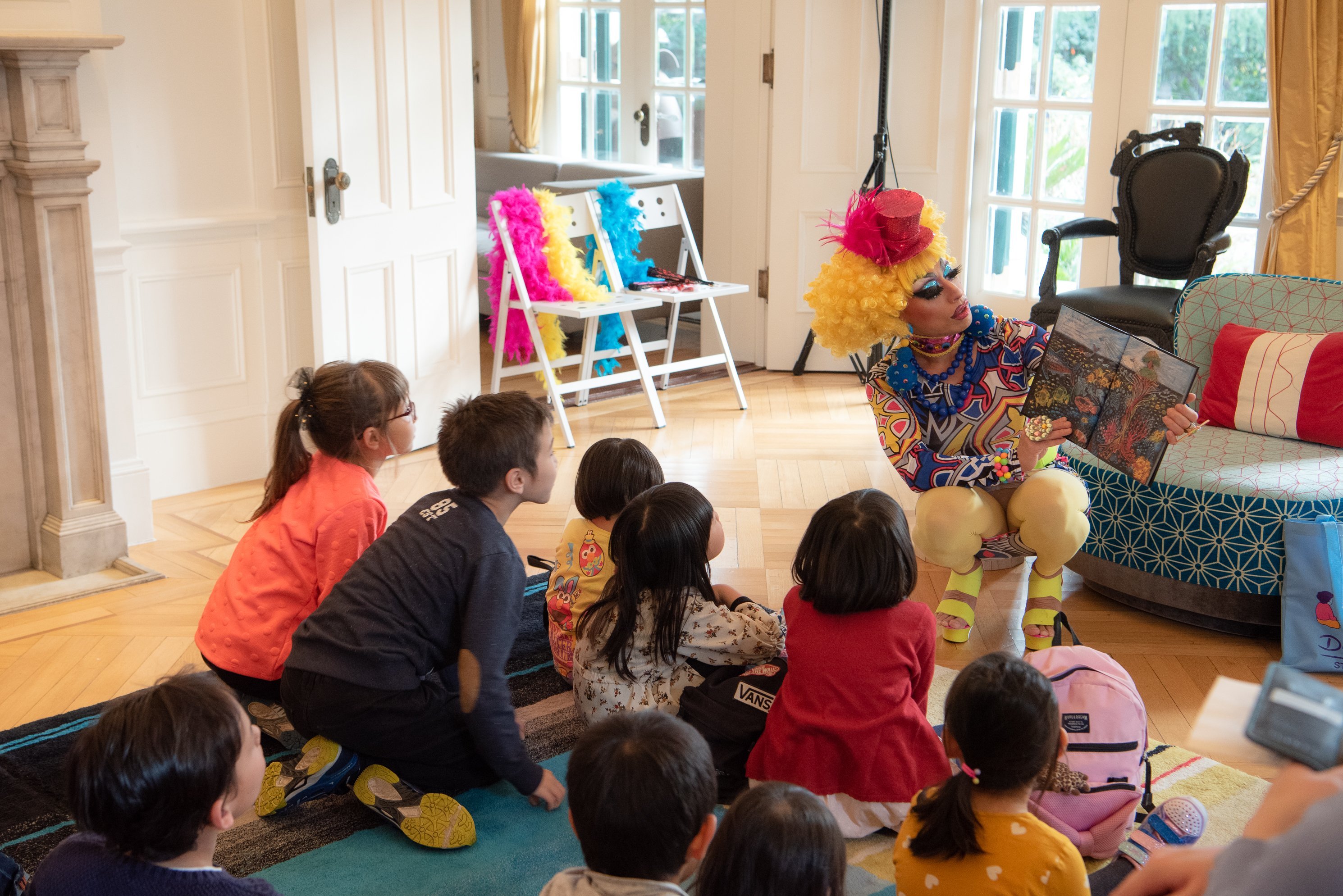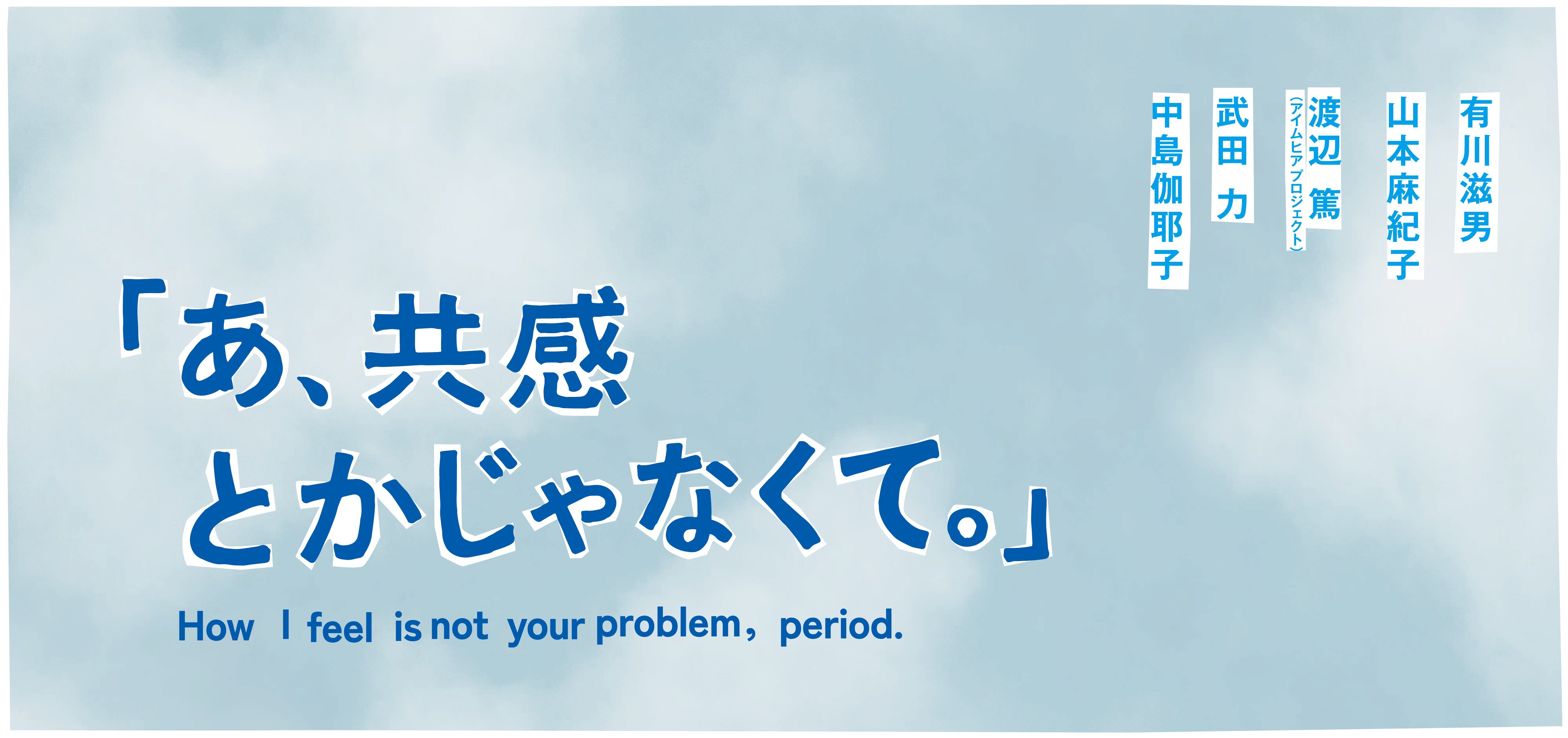
How I feel is not your problem, period.
“How I feel is not your problem, period.” serves to cast an eye on the difficulties of life that children in their teens may feel, and proposes to continue thinking about various unanswerable questions through engaging with contemporary art.
“Empathy” is the ability to understand the feelings and experiences of others. Kindness and consideration to see things from another person’s point of view is a skill necessary to promote the facilitation of society, and its importance has also been emphasized in recent years both in the fields of education and business. However, for everyone there are indeed times when one does not wish to empathize or be empathized with. Some people might feel that their feelings have been taken lightly if someone says to them “I understand how you feel” with a know-it-all look on their face, while others may feel uncomfortable when coerced to empathize under peer pressure through phrases such as, “You know how I feel, right?” This is especially true for teens, who often struggle with relationships between family and friends, as well as during the process of establishing their own identity. Nevertheless, when empathy is considered as equating to kindness, there are moments when one may actually feel burdened to reject empathy.
The works of five artists: Shigeo Arikawa, Makiko Yamamoto, Atsushi Watanabe (I'm here project), Riki Takeda, and Kayako Nakashima attempt to think about and understand people they don’t know, or those who are not there in front of them. While some express doubts towards facile or superficial forms of empathy, others arrive at a state of empathy through developing a deep understanding. Through viewing their work, we too may find ourselves raising questions such as, “What is this person doing?” and “What is this person thinking?” There is no pre-prepared answer to these queries, and all we can do is to keep contemplating. We believe that not empathizing is by no means an act of rejection, but instead is that which opens up new possibilities for dialogue and thinking.
Through this exhibition, we hand over the words "How I feel is not your problem, period." to teenage children, with the message that it is okay not to empathize, and we hope that not only children in their teens but also adults may experience the fun of engaging in on-going contemplation without having the need to jump to conclusions.
Artists
有川滋男|Shigeo Arikawa
Shigeo Arikawa will present four works from his video series "(Re)interpretation", which depicts fictional occupations, and one new work created especially for this exhibition. Through the installation that looks like a job fair or a trade show, viewers are invited to imagine the job descriptions and recruitment requirements of the people in the videos.
Born 1982 in Tokyo, graduated from the Department of Musical Creativity and the Environment at Tokyo University of the Arts in 2006. Produces films, video installations and photographic works. His works aim to question the meaning of 'seeing' by deliberately interrupting and agitating the human act of trying to understand and give meaning to what we see. His films have been screened at the International Film Festival Rotterdam, the Hong Kong International Film Festival and the Vancouver International Film Festival, among others. His works have been shown at the Hiroshima City Museum of Contemporary Art's '30th Anniversary Exhibition: The Seven Lamps of The Art Museum' (2019) and 'Koganecho Bazaar 2017', as well as in residencies at the Rijksakademie van Beeldende Kunsten in the Netherlands and the Aomori Contemporary Art Centre (ACAC). Lives and works in Amsterdam, the Netherlands.
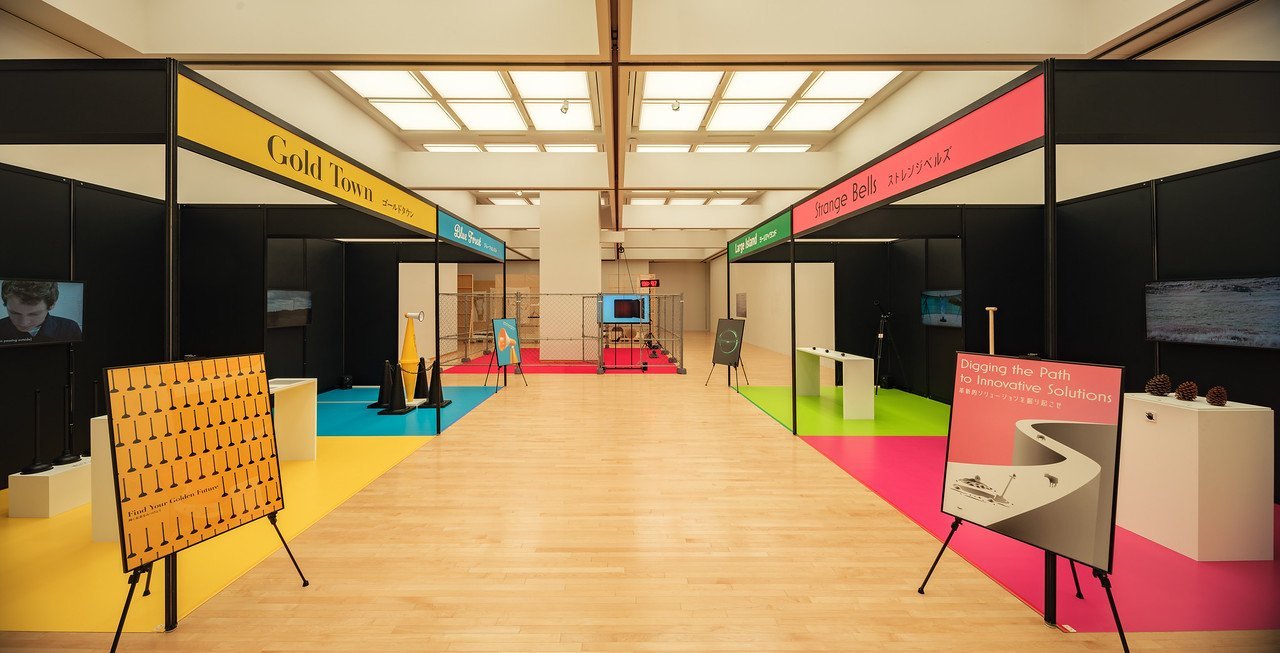
Installation view of Shigeo Arikawa’s works photo: ookura hideki | KUROME photo studio
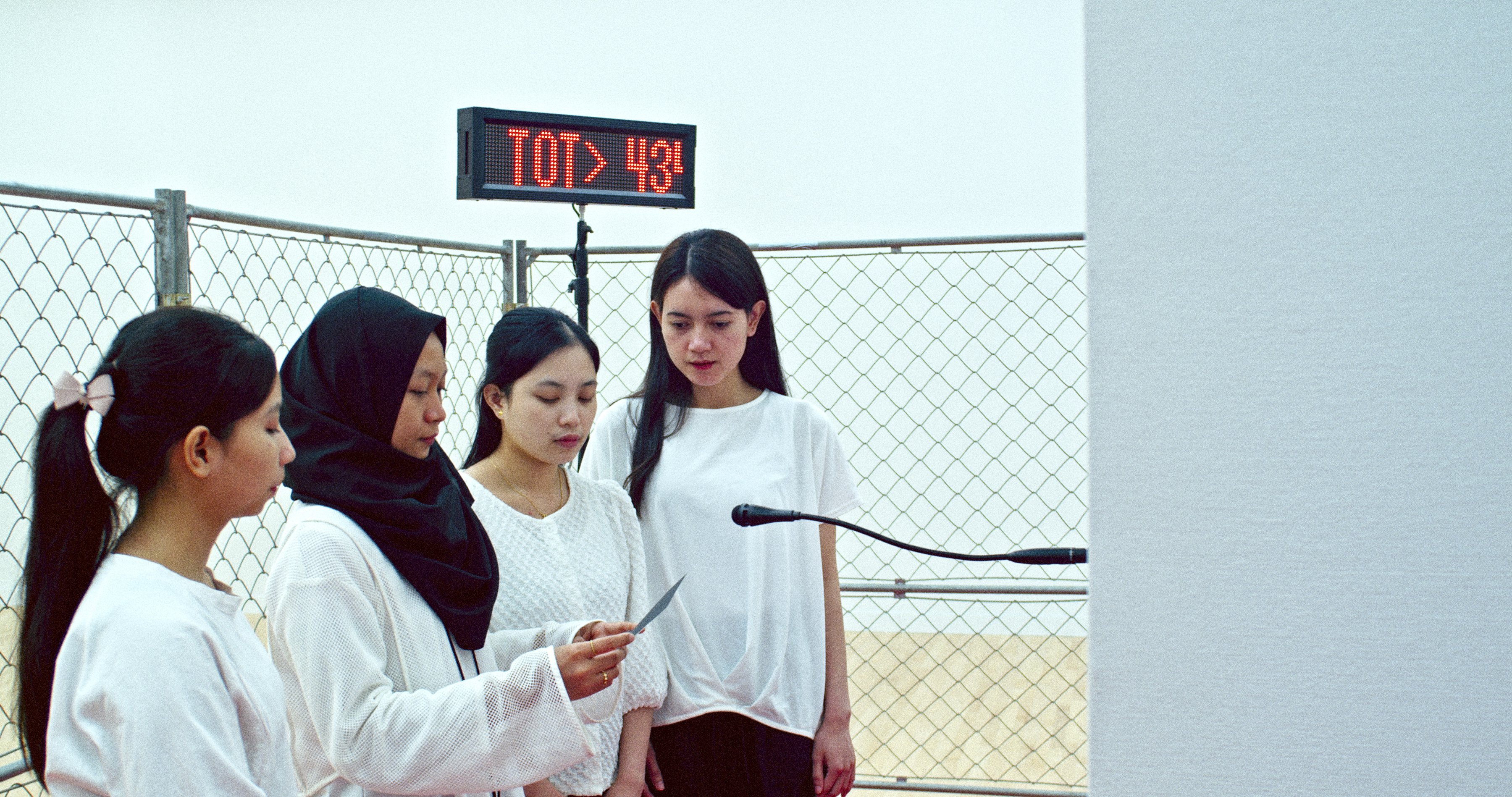
Shigeo Arikawa, Deep River, 2023
山本麻紀子|Makiko Yamamoto
Makiko Yamamoto has been researching legends of giants since 2013, visiting various regions where some legends of giants remains, and making a video work of a giant' back tooth that have fallen out when he sneezed, flowing down rivers. The exhibition will feature a house-like installation centred on Giant's Tooth (2018) and the Cuttage Seedling Project she has been working on in recent years.
Born 1979 in Kyoto, completed postgraduate studies at Kyoto City University of Arts, Concept and Media Planning, 2005. Through researches on the location, she continues to observe and communicate with the people involved in that place. She produces works by developing this process into various forms such as painting, photography, video, dyeing and embroidery. Major exhibitions include 'Criterium 84 Mending Mito' at Art Tower Mito (2012), 'Decoration never dies, anyway' at the Tokyo Metropolitan Teien Art Museum (2017) and the project 'Sujin Sukusuku Centre (Cuttage Seedling Project)' in Shimogyo Ward, Kyoto (from 2020). Lives and works in Shiga Prefecture.
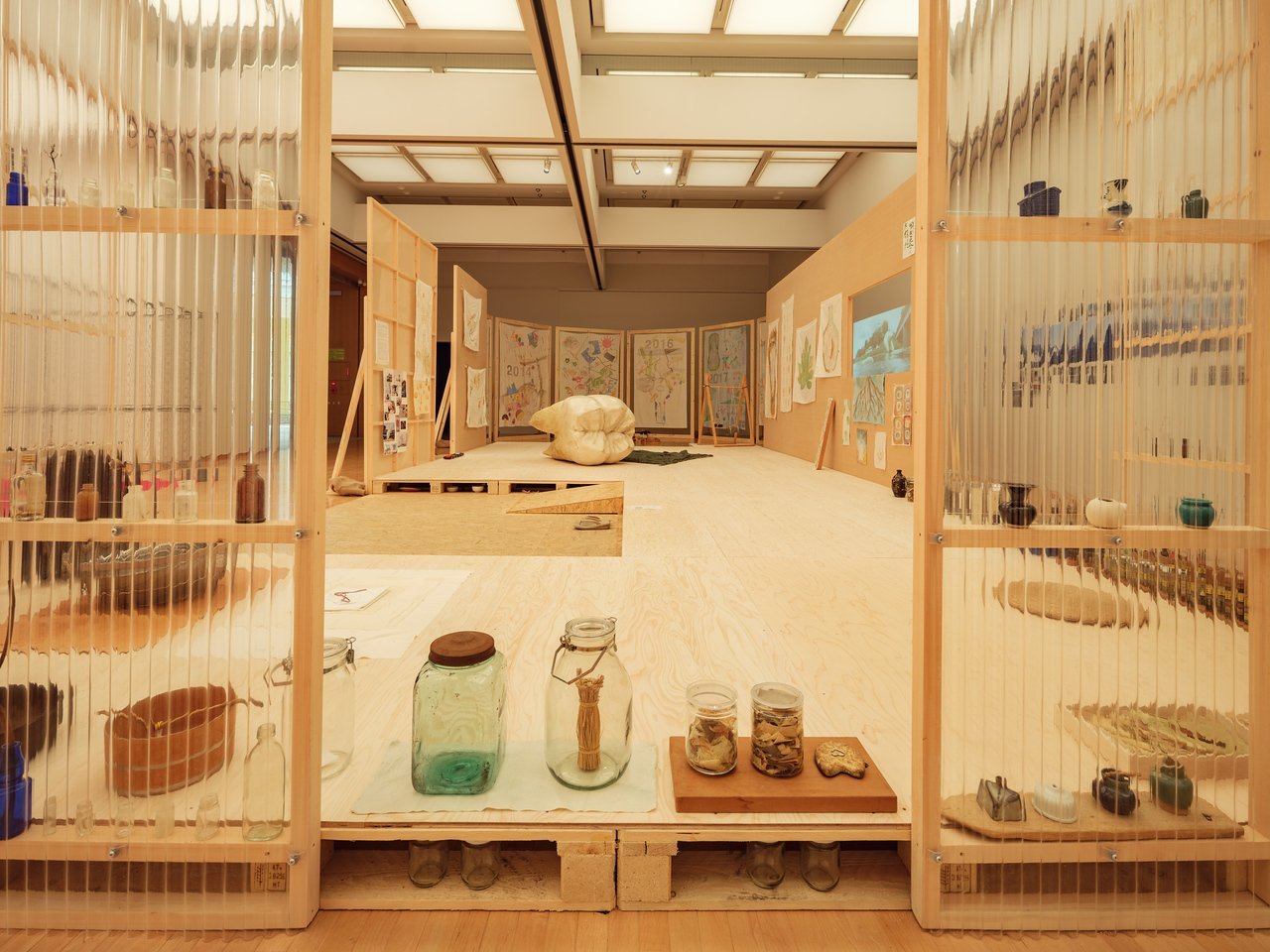
Installation view of Makiko Yamamoto’s works photo: ookura hideki | KUROME photo studio
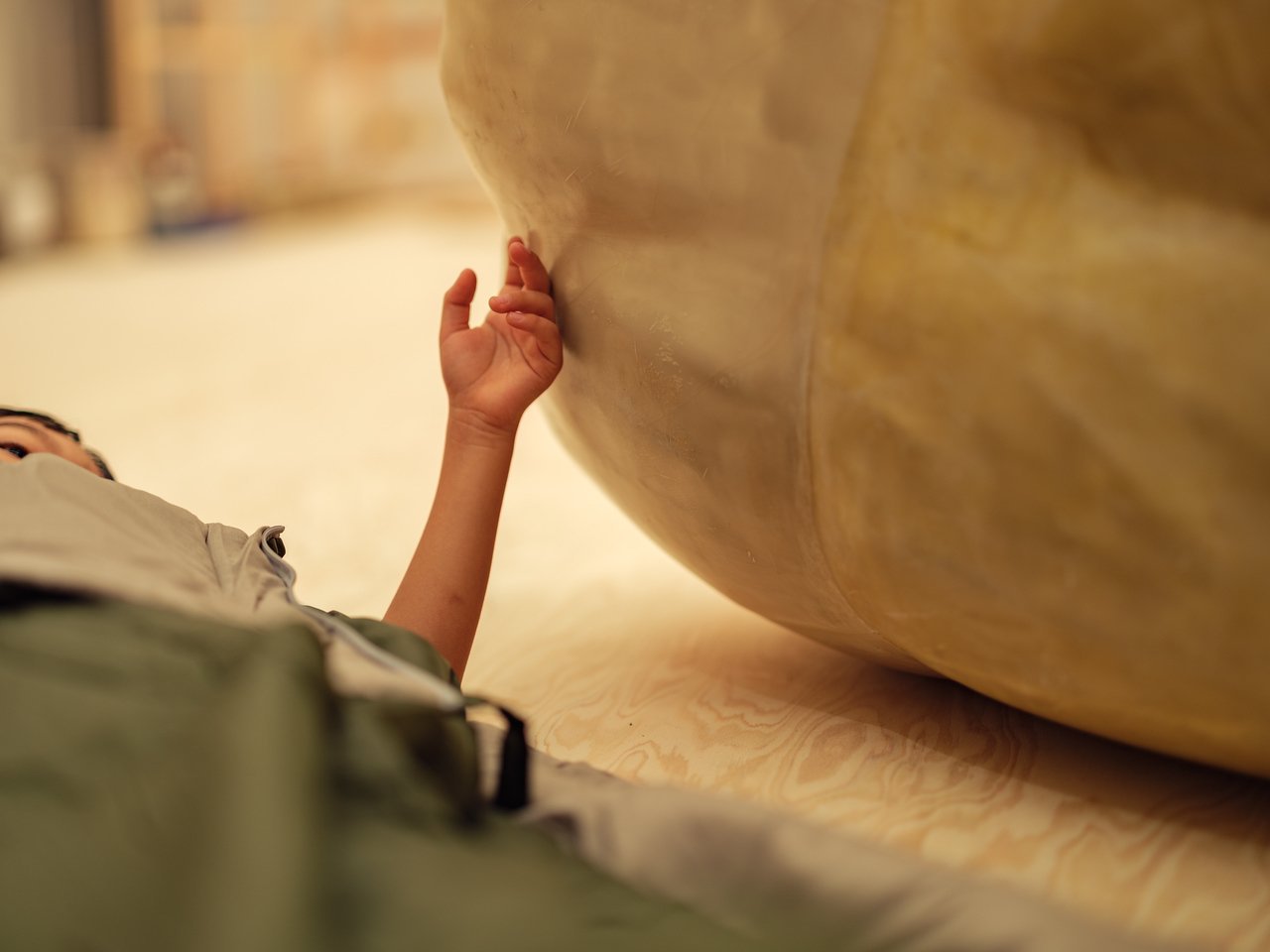
Visitors are invited to lie down and wrap themselves in a sleeping bag next to the Giant’s Tooth. Makiko Yamamoto, Giant’s Tooth, 2018 photo: ookura hideki | KUROME photo studio
渡辺篤(アイムヒア プロジェクト)|Atsushi Watanabe(I’m here project)
His exhibits will be centred on Monument of Recovery “The Door” (2016), which is based on his own pain as a former social withdrawal, and works from the project The Day We Saw the Same Moon from “I'm here project”, of which Watanabe is a representative. The project collects photographs of the moon taken by people who feel isolated due to COVID-19 pandemic, and presents an opportunity to think about others who are not here. Atsushi Watanabe will also exhibit at NACT View at the National Art Center, Tokyo from September 2023.
Born 1978 in Kanagawa, completed his postgraduate studies at Tokyo University of the Arts in 2009. In recent years, he has conducted a number of projects in collaboration with traumatised people such as ‘social withdrawl', which is an invisible social issue and of which he himself is a survivor . The projects cover social, cultural, welfare and psychological themes, such as otherness, the possibility and impossibility of empathy, and social inclusion. Lives and works in Kanagawa.
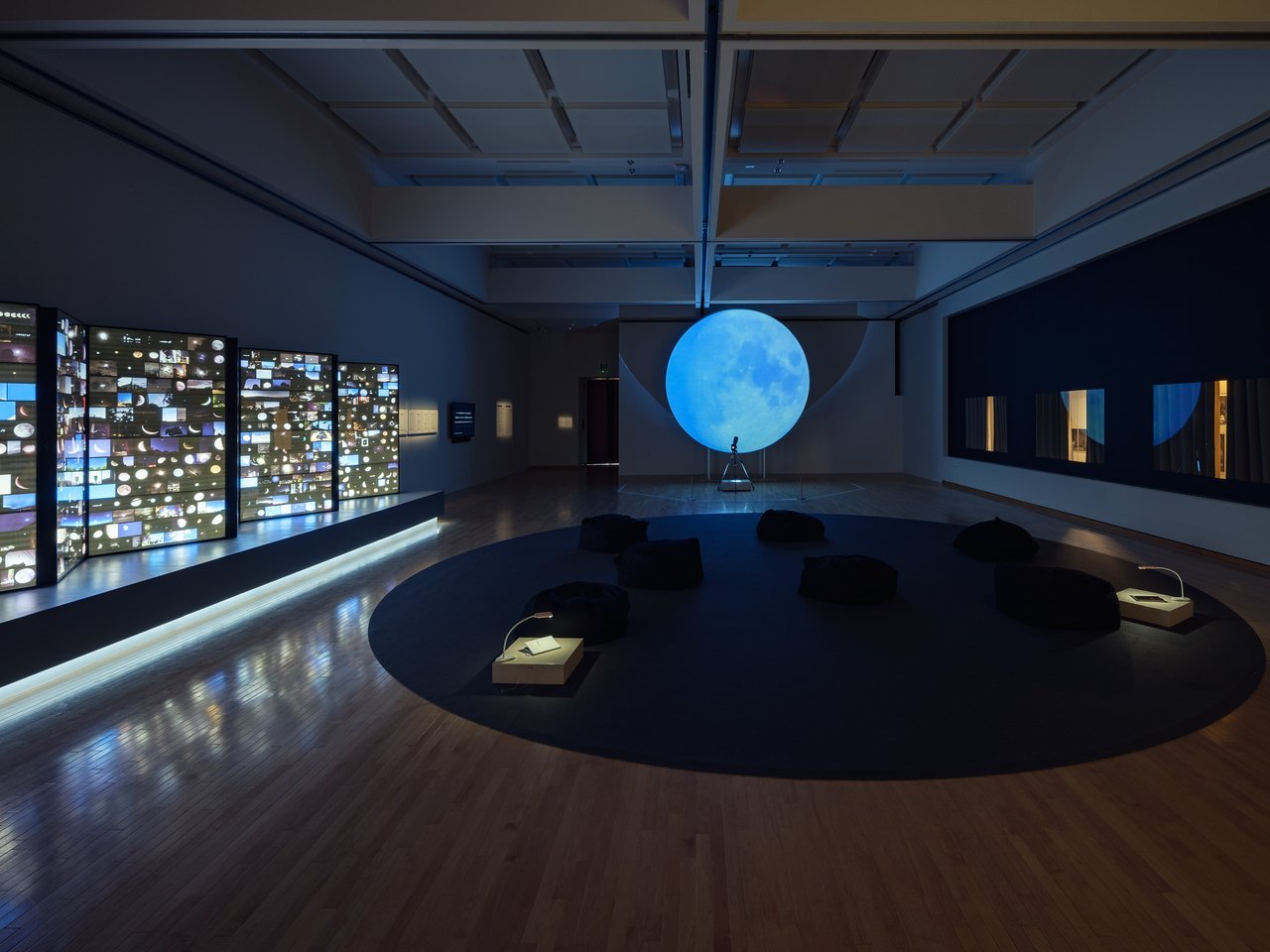
Installation view of the works by Atsushi Watanabe and I’m here project photo: ookura hideki | KUROME photo studio
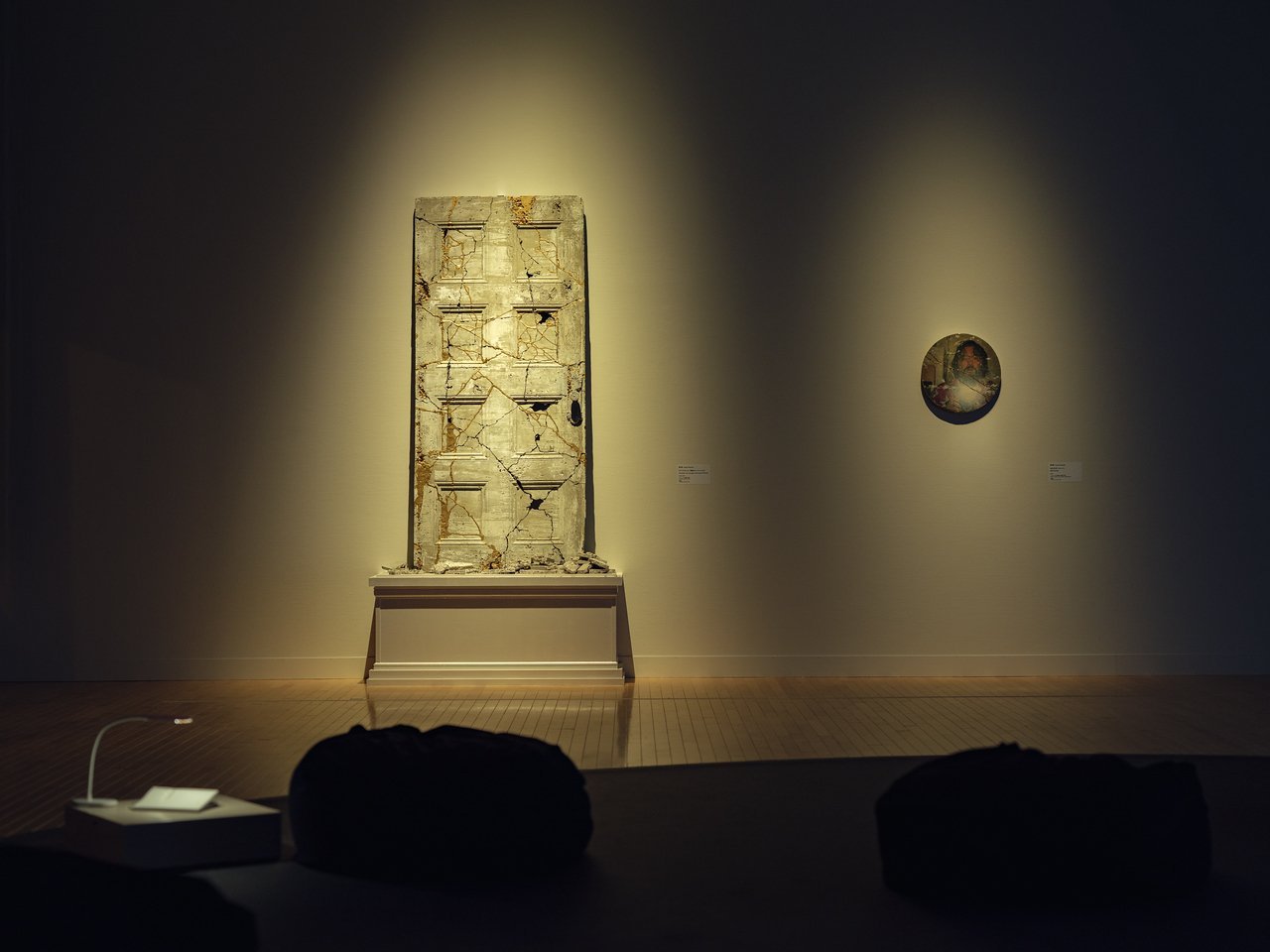
Atsushi Watanabe, Self Portrait and The Door, 2016 photo: ookura hideki | KUROME photo studio
武田力|Riki Takeda
Takeda will exhibit a document introducing his activities as a folk performing arts archivist who inherits movements out of a life rooted in the local area that have been passed down from generation to generation. In addition, for the first time in Tokyo, a dialogue space called Textbook Cafe will be shown, where visitors can browse used primary school textbooks and recall their own educational experiences, leading them to question themselves about learning or education.
Stage director and folk arts archivist. After studying elementary education at Rikkyo University and working in a kindergarten, he joined the theatre company chelfitsch as an actor. He acted mainly in Europe and the USA, but became a stage director after the Great East Japan Earthquake. He has also been involved in the revival and transmission of folk performing arts in depopulated villages. He has also been active in Asia, participating in the international theatre festival Karnabal in the Philippines (2017), the residency program at the Ming Contemporary Art Museum in Shanghai, China. Lives and works in Tokyo/Kumamoto Prefecture, Japan.
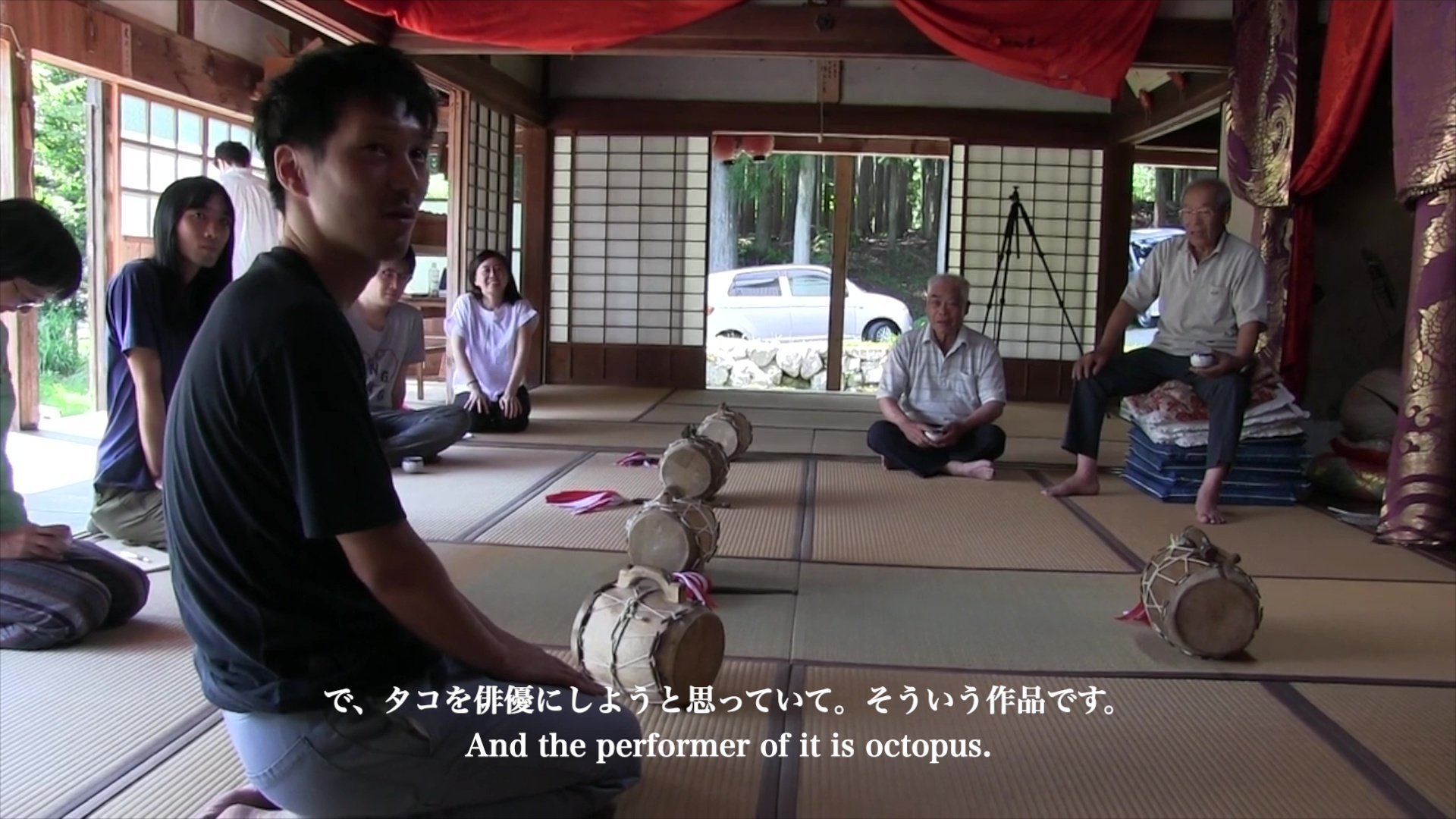
Riki Takeda, Rokusai Nenbutsu Prayer Dance Inheritance Project in Kutsuki Furuya, 2023
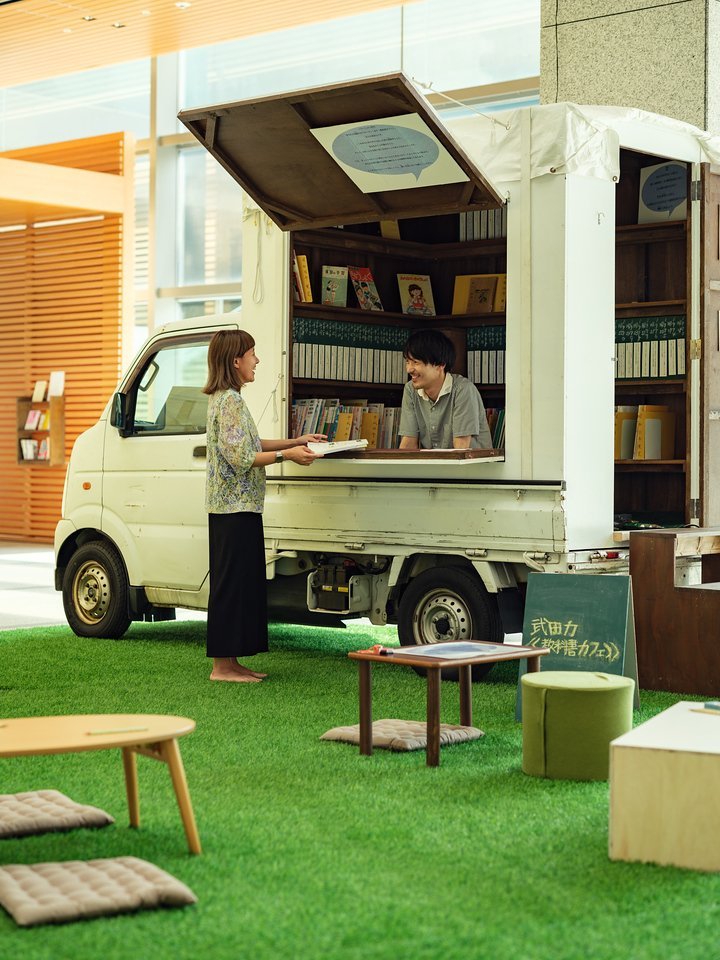
The artist himself sometimes shows up and hand you some textbooks. Riki Takeda, Textbook Café, 2018- photo: ookura hideki | KUROME photo studio
中島伽耶子|Kayako Nakashima
Kayako Nakashima is known for her site-specific works in old houses at the Echigo-Tsumari Art Triennial and the Setouchi International Art Festival, where her work is always inseparably linked to the space. As a new work for this exhibition, the artist will create a wall that divides the white cube gallery and penetrates to the atrium. Viewers are invited to explore the presence of the other side of the wall and attempt to communicate with the person behind it.
Born 1990 in Kyoto, she completed her PhD in Fine Arts at Tokyo University of the Arts in 2020. She attempts to perceive the other side of the boundaries that separate things, and expresses the asymmetry of communication and the inability to understand each other through dialogue. Major exhibitions include Echigo-Tsumari Art Triennial Echigo-Tsumari Art Triennale (2012, 2015), Setouchi International Art Festival (2013, 2016), Shiseido art egg ‘Hedgehogs’ (2021), Akita Public Art University Gallery BIYONG POINT, 'What to talk about when we talk about us' (2022). Lives and works in Akita.
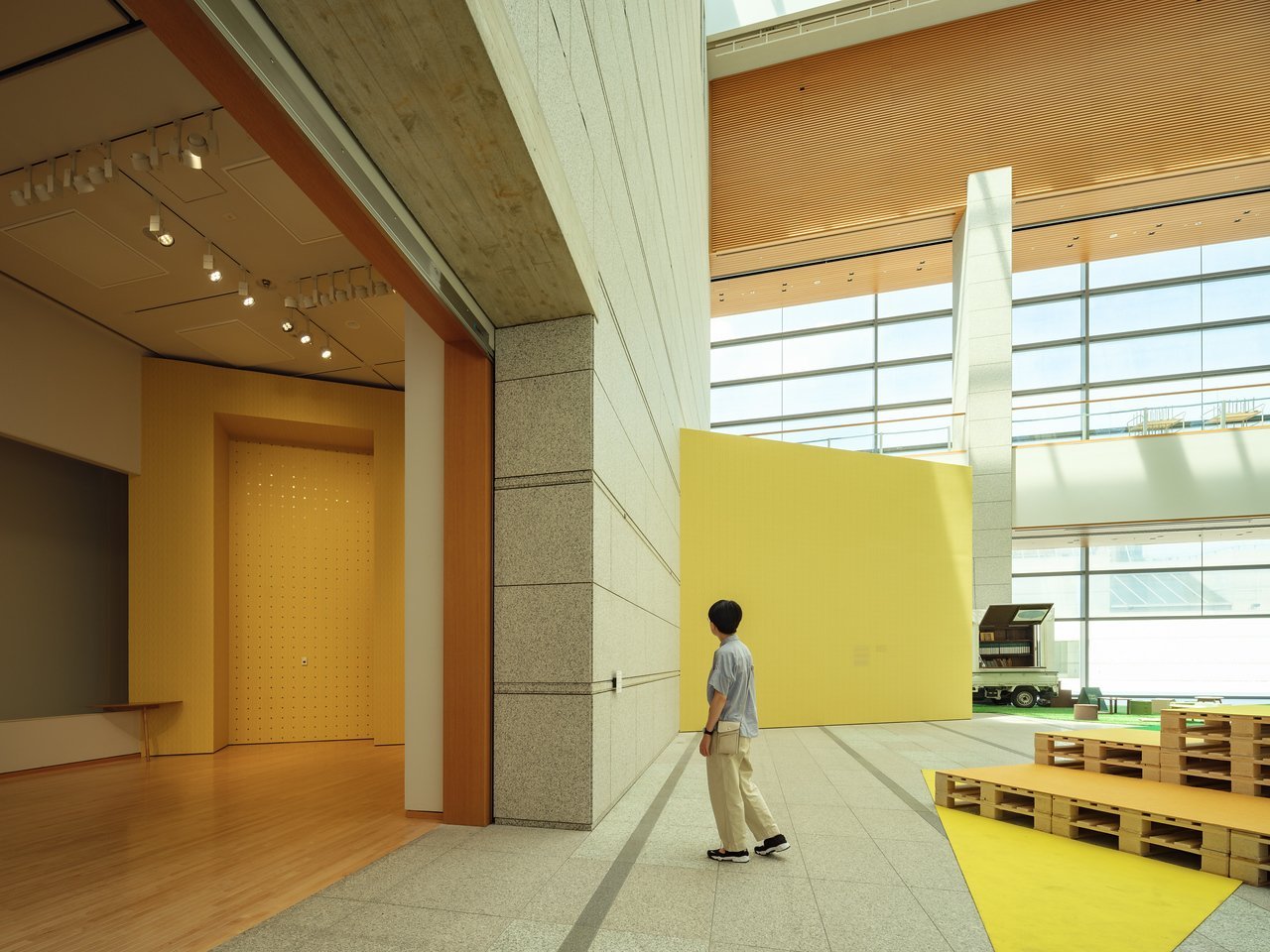
Kayako Nakashima, we are talking through the yellow wall, 2023 photo: ookura hideki | KUROME photo studio
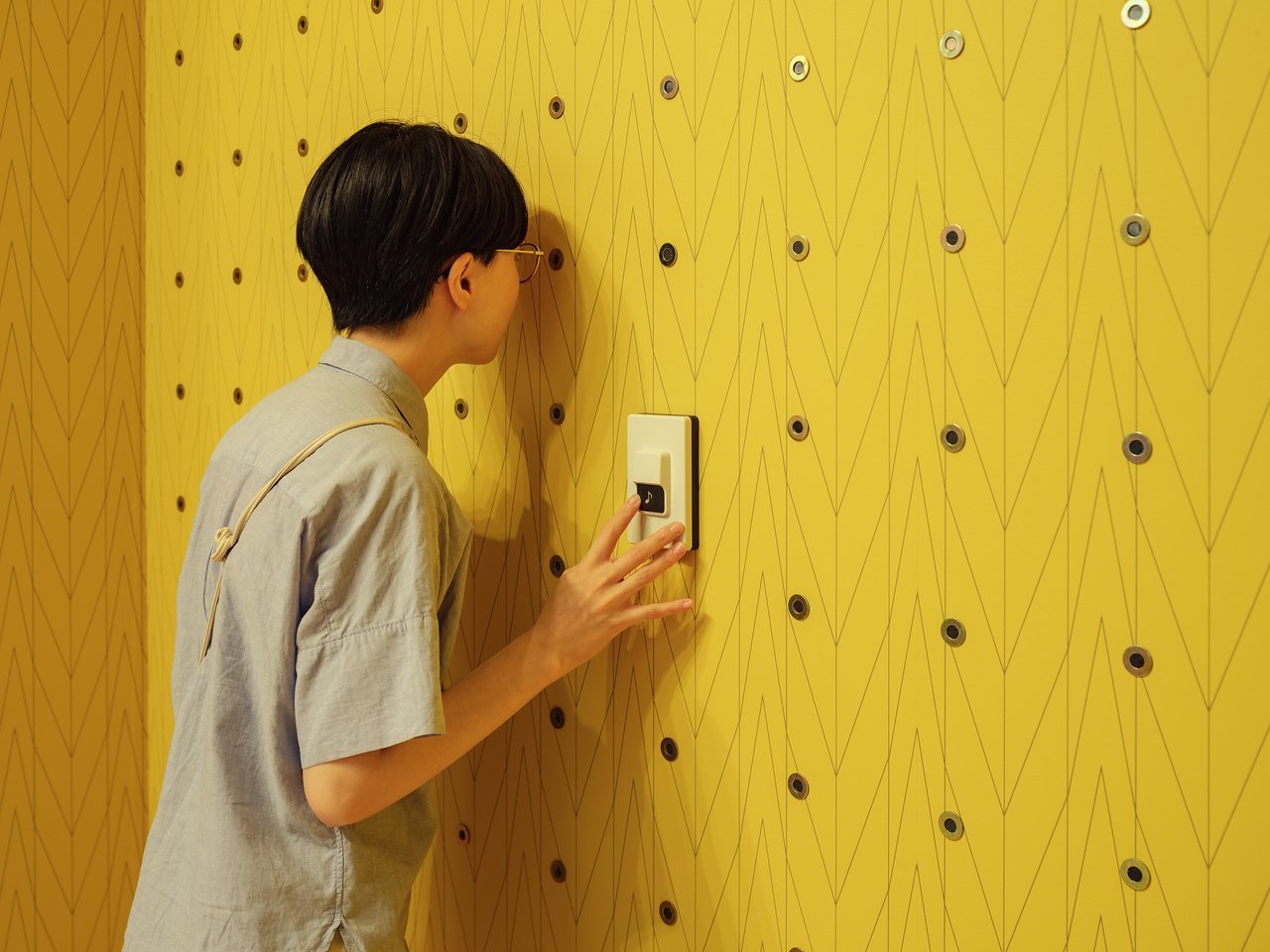
Kayako Nakashima, we are talking through the yellow wall, 2023 photo: ookura hideki | KUROME photo studio
Related Programs
We plan to host a variety of programs including storytelling by drag queens for young children (Drag Queen Story Hour), café philosophique (P4C) and reading clubs, and many other opportunities for children to respect the opinions and ideas of themselves and others. Please check our website for up-to-date information.
Information
- Exhibition Period
Sat. 15 Jul - Sun. 5 Nov, 2023
- Closed
Mondays (except 17 Jul., 18 Sep., 9 Oct.) and 18 Jul., 19 Sep., 10 Oct.
- Opening Hours
10 AM - 6 PM (Tickets available until 30 minutes before closing.)
- Venue
Museum of Contemporary Art Tokyo, Exhibition Gallery B2F
- Admission
Adults: 1,300 Yen / University & College Students, Over 65: 900 Yen / High-school & Junior High-school Students and those under the age of 18: 500 Yen / Elementary School Students & younger: free
【Combined Ticket】DAVID HOCKNEY + "How I feel is not your problem, period."
Adults: 3,200 Yen / University & College Students, Over 65: 2,100 Yen / High-school & Junior High-school Students: 1250 Yen
* 20% discount for a group of over 20 people (not applicable for Combined Ticket)
* Ticket includes admission to the MOT Collection exhibition.
* Persons with a Physical Disability Certificate, Intellectual Disability Certificate, Intellectual Disability Welfare Certificate, or Atomic Bomb Survivor Welfare Certificate as well as up to two attendants are admitted free of charge.
*Re-entry for this exhibition is allowed on the same day.
ONLINE TICKETS (first term: 15 Jul. - 15 Sep.)- Organized by
Museum of Contemporary Art Tokyo operated by Tokyo Metropolitan Foundation for History and Culture
- Support by
Embassy of the Kingdom of the Netherlands
- Cooperated by
Sangetsu Corporation / Tokyo Expanding Decoration Co., Ltd. / Futoko Shimbun / Hikikomori UX Kaigi / Framer Framed




